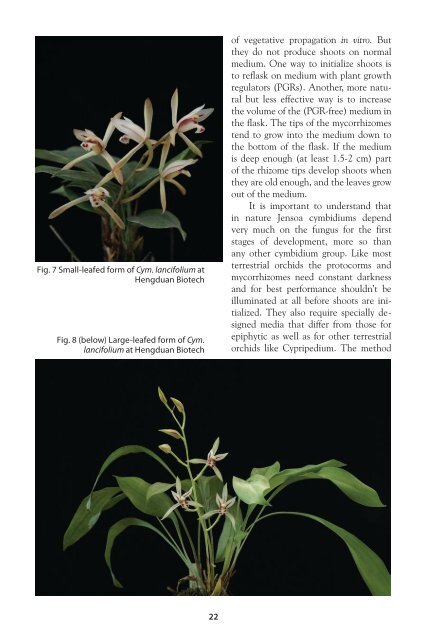CSA-Journal-2016-04
Create successful ePaper yourself
Turn your PDF publications into a flip-book with our unique Google optimized e-Paper software.
Fig. 7 Small-leafed form of Cym. lancifolium at<br />
Hengduan Biotech<br />
Fig. 8 (below) Large-leafed form of Cym.<br />
lancifolium at Hengduan Biotech<br />
of vegetative propagation in vitro. But<br />
they do not produce shoots on normal<br />
medium. One way to initialize shoots is<br />
to reflask on medium with plant growth<br />
regulators (PGRs). Another, more natural<br />
but less effective way is to increase<br />
the volume of the (PGR-free) medium in<br />
the flask. The tips of the mycorrhizomes<br />
tend to grow into the medium down to<br />
the bottom of the flask. If the medium<br />
is deep enough (at least 1.5-2 cm) part<br />
of the rhizome tips develop shoots when<br />
they are old enough, and the leaves grow<br />
out of the medium.<br />
It is important to understand that<br />
in nature Jensoa cymbidiums depend<br />
very much on the fungus for the first<br />
stages of development, more so than<br />
any other cymbidium group. Like most<br />
terrestrial orchids the protocorms and<br />
mycorrhizomes need constant darkness<br />
and for best performance shouldn’t be<br />
illuminated at all before shoots are initialized.<br />
They also require specially designed<br />
media that differ from those for<br />
epiphytic as well as for other terrestrial<br />
orchids like Cypripedium. The method<br />
22


